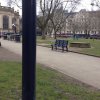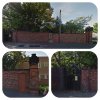Phil
Gone, but not forgotten.
While on the subject of street benches, Historic England (formerly English Heritage) has guidance on pieces of street furniture. Re. benches it says :
View attachment 103339
Do we have any Birmingham examples which should be brought to their attention? Think it's worth keeping eyes peeled. If you spot any, do mention it here and I'd be happy to contact Historic England. Viv.
Viv if you are talking about this sort of thing I don't think you will find many on the streets of Birmingham, with a value of about £5,000 if there ever were any they are more than likely now in some rich ex Council officials garden.













